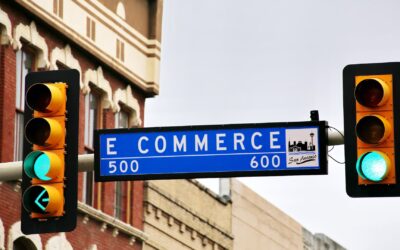As the digital marketplace continues its rapid expansion, Value Added Tax (VAT) regulations for e-commerce sellers on platforms such as Amazon UK remain a critical area of focus.
For businesses operating in this dynamic environment, staying ahead of the current rules and anticipating potential shifts is paramount for compliance and sustained growth. This comprehensive guide provides an in-depth look at the Amazon VAT UK landscape as of May 2025, offering essential information and actionable steps for e-commerce stores to navigate these regulations effectively.
The Established Amazon VAT Framework in the UK
As we stand in mid-May 2025, Amazon already plays a significant role in the VAT ecosystem for UK sales and understanding the existing framework is the cornerstone of compliance:
Get A Free Quote
Breakout E-commerce accountants and Xero specialists to supercharge your UK online business growth.
VAT on Low-Value Imports (Consignments Under £135): A key regulation in effect is the treatment of goods sold to UK consumers and dispatched from outside the UK in consignments valued at £135 or less. In these instances, Amazon is generally responsible for collecting the VAT at the point of sale and remitting it directly to HMRC. This measure aims to ensure VAT is accounted for on a significant volume of cross-border e-commerce transactions.
VAT Obligations for Overseas Sellers: For sellers established outside the UK, Amazon closely monitors their VAT compliance. If Amazon has reason to believe a non-UK seller with goods located in the UK is not fulfilling their VAT obligations, they may take on the responsibility of collecting and remitting the VAT on those sales. This is a crucial mechanism to prevent VAT evasion by overseas entities.
Facilitating VAT Invoicing for Sellers: Amazon provides tools within its Seller Central platform to enable sellers to generate and issue VAT invoices to their customers. This functionality is particularly important for Business-to-Business (B2B) transactions, where the purchasing business needs a valid VAT invoice to reclaim the VAT they have paid.
Amazon’s VAT Calculation Services: To aid sellers in managing their VAT obligations, Amazon offers VAT Calculation Services. This tool can automatically calculate the VAT due on sales based on the seller’s VAT registration details and the prevailing VAT rates for the specific product categories. While a valuable resource, it’s crucial to remember that the ultimate responsibility for accurate VAT calculation and application rests with the seller.
B2B and B2C
The treatment of B2B and B2C sales is now different when your goods are sold from overseas. Amazon VAT treatment will largely be related to B2C sales, but as some B2B sales occur on the platform, you will need to be vigilant in treating them accordingly.
If you would like to discuss how we can help you automate your systems through Xero for clear identification, please click here to learn more.
UK businesses with UK product (B2C)
If your e-commerce store is UK-based, you may find your situation remains unchanged. Complications arise if you are dropshipping or goods are dispatched from a supplier outside of the UK but if your product is in the UK, you can continue as normal. In the following scenario, Amazon will collect VAT for you:
If goods up to a value of £135 are sold on Amazon Marketplace and shipped directly from outside of the UK to UK-based customers.
N.B. If your goods are of a greater value, you will be able to account for them as you previously did.
Non-UK businesses (B2C)
If your e-commerce store is based outside of the UK and you are shipping B2C, Amazon will do all the heavy lifting, collecting VAT for you if goods of any value are sold to UK customers.
Amazon VAT UK changes – woman typing on laptop with an open notebook and coffee cup on the desk. She is out of shot with only her knee and arms visible.
All B2B sales
Amazon VAT rules have not changed for B2B sales. Amazon will not collect the VAT; you must account for it as you did before January 1st, 2021.
You will know if a sale is B2B by whether the customer has a valid UK VAT number. All VAT-registered accounts are categorised as B2B and all others as B2C.
UK to EU sales
From the start of 2023, Amazon no longer includes the UK in its PAN EU fulfilment network. This means, devastatingly for some e-commerce entrepreneurs, that it is no longer facilitating sales to the EU from the UK. We are hopeful that future trade deals may rectify the situation, but for now, you will no longer be able to sell from the UK to the EU via Amazon and, as such, have no VAT implications.
Sellers are likely to receive requests for information from Amazon to confirm where their business is established, and providing this information is a requirement under UK VAT law. While you may have already provided some information in the past, legislation updates in 2024 may require you to submit additional information. While Amazon will contact sellers should they need this information, you can view a full list of required documentation here.
Amazon VAT rates when they collect
If Amazon collects VAT on a transaction, you still need to include it on your VAT return, but it should be listed as zero-rated. This means you do not pay VAT again and should be declared in box 6 of your return. Zero-rated is not the same as exempt and means you can still reclaim VAT paid during the completion of the transaction.
Flat-rate scheme
As VAT collected by Amazon is zero-rated, it still counts towards your taxable turnover. This is bad news if you are currently on the Flat Rate Scheme and your sales are predominantly made up of B2C sales. In this case, we will be happy to discuss whether you would be better off on the standard VAT scheme.
The Anticipated 2025 Changes: A Shift in Responsibility
The expected changes in 2025 will likely see Amazon taking on a more direct role in the VAT collection and remittance process for certain categories of sellers. This shift is anticipated to mirror similar models implemented in other jurisdictions and aims to address situations where VAT compliance has historically been challenging.
Based on current trends and discussions, the key areas likely to be affected include:
- Non-UK Sellers with Goods Located in the UK: This is a primary area of focus. If a seller is based outside the UK and stores their goods in UK warehouses (including those facilitated by Amazon FBA), Amazon is increasingly likely to become responsible for collecting and remitting the VAT on those sales directly to HMRC. This aims to prevent non-UK sellers from evading VAT by selling goods already within the UK without proper registration.
- Sales to UK Consumers by Sellers Not Established in the UK: Even if goods are shipped directly from outside the UK, Amazon might be required to collect VAT at the point of sale for sellers who do not have a UK establishment. This would simplify the process for consumers and ensure VAT is accounted for.
- Potential Focus on Specific Product Categories: HMRC and Amazon might identify specific product categories that are deemed high-risk for VAT fraud and implement stricter collection mechanisms for those.
Next Steps
If you are selling on Amazon FBA and are still unclear on your VAT implications, we would be happy to help. 2024 is a tumultuous year for so many as we transition to new and still-developing legislation. We can give you the confidence and advice you need to grow your e-commerce store to its true potential.
The best time to act is now email your ecommerce accountant today.
hello@unicornaccounting.co.uk
Related articles
https://unicornaccounting.co.uk/blog/a-guide-to-etsy-fees-for-uk-sellers/
https://unicornaccounting.co.uk/blog/do-you-pay-vat-on-ebay-fees/
https://unicornaccounting.co.uk/blog/can-you-sell-on-amazon-without-vat-registration/
Get A Free Quote
Breakout E-commerce accountants and Xero specialists to supercharge your UK online business growth.





